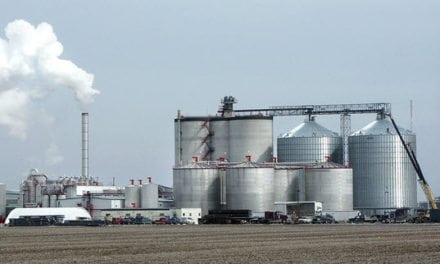Another Wicked Hurricane Season?
- Climate change affecting storm intensity
- 2020 hurricane damage put at $40 billion
- Expect 13 tropical storms this hurricane season
- Degree days underperforming
Alan Levine—Chairman, Powerhouse
(202) 333-5380
The Matrix
Last year was one of the most debilitating storm seasons on record. NOAA recorded a record high 30 storms in the Atlantic basin, leaving more than 400 deaths and more than $40 billion in damage. NOAA had to resort to Greek letters to name storms after its planned list was exhausted. Fourteen storms are experienced in a typical season.
Weather projections become more precise as the year advances toward winter. NOAA forecasters are now projecting six to 10 hurricanes during the season starting June 1, 2021. Of those, three to five could reach major proportions, meaning winds of 111 miles per hour or higher.
This year, subtropical storm Ana has already been named. This is the seventh year in a row in which a storm was named before the start of the season. The consistent early starts support the idea that climate change may be altering the timing of hurricanes.
The official season, ending on November 30, contains 97% of all Atlantic tropical storms and hurricanes. Starting the hurricane season on June 1 may become less useful than in the past. The National Hurricane Center has not proposed a change in the start of Hurricane Season. One clue to NHC’s thinking, however, is that it has been issuing “routine Atlantic tropical weather outlooks on May 15, rather than June 1.”
Private-sector meteorologists, like those at Colorado State University, are calling for an active season, too. Colorado anticipates 17 storms. (This forecast was first released in April.) The outlook includes eight hurricanes and four major systems.
Climate change is influencing hurricane development. Warmer sea surface temperatures are supporting more dangerous seasons, that are more intense and produce more rainfall. Louisiana experienced back-to-back storms last year, with substantial losses of demand.
Supply/Demand Balances
Supply/demand data in the United States for the week ended May 14, 2021, were released by the Energy Information Administration.
Total commercial stocks of petroleum fell by 0.2 million barrels during the week ended May 14, 2021.
Commercial crude oil supplies in the United States increased by 1.3 million barrels from the previous report week to 486.0 million barrels.
Crude oil inventory changes by PAD District:
PADD 1: Plus 1.3 to 8.0 million barrels
PADD 2: Plus 1.2 million barrels to 134.5 million barrels
PADD 3: Plus 0.8 million barrels to 272.3 million barrels
PADD 4: Plus 0.4 million barrels to 25.4 million barrels
PADD 5: Down 2.4 million barrels to 45.8 million barrels
Cushing, Oklahoma, inventories were down 0.1 million barrels from the previous report week to 45.6 million barrels.
Domestic crude oil production was up 100,000 barrels per day from the previous report week at 11.0 million barrels daily.
Crude oil imports averaged 6.411 million barrels per day, a daily increase of 923,000 barrels. Exports increased 1.510 million barrels daily to 3.306 million barrels per day.
Refineries used 86.3% of capacity, 0.2 percentage points higher from the previous report week.
Crude oil inputs to refineries increased 96,000 barrels daily; there were 15.116 million barrels per day of crude oil run to facilities. Gross inputs, which include blending stocks, rose 47,000 barrels daily to 15.619 million barrels daily.
Total petroleum product inventories fell 1.5 million barrels from the previous report week.
Gasoline stocks fell 2.0 million barrels from the previous report week; total stocks are 234.2 million barrels.
Demand for gasoline rose 424,000 barrels per day to 9.224 million barrels per day.
Total product demand increased 1.789 million barrels daily to 19.272 million barrels per day.
Distillate fuel oil stocks fell 2.3 million barrels from the previous report week; distillate stocks are at 132.1 million barrels. EIA reported national distillate demand at 4.058 million barrels per day during the report week, an increase of 91,000 barrels daily.
Propane stocks rose 0.4 million barrels from the previous report week; propane stocks to 44.4 million barrels. The report estimated current demand at 1.050 million barrels per day, an increase of 415,000 barrels daily from the previous report week.
Natural Gas
The United States generated fewer cooling degree days for 2021 through May 22, compared with normal. Degree day shortfalls can reduce the demand and price of natural gas futures.
Fewer degree days dovetail with shrinking seasonal demand to hold rallies in check. There were declines in both exports to Mexico and liquefied natural gas (LNG) feed gas largely offset by lower imports from Canada.
According to the EIA:
The net [natural gas] injections into storage totaled 71 Bcf for the week ended May 14, compared with the five-year (2016–2020) average net injections of 86 Bcf and last year’s net injections of 84 Bcf during the same week. Working natural gas stocks totaled 2,100 Bcf, which is 87 Bcf lower than the five-year average and 391 Bcf lower than last year at this time.
Was this helpful? We’d like your feedback.
Please respond to [email protected]
Powerhouse Futures & Trading Disclaimer
Copyright 2021 Powerhouse Brokerage, LLC, All rights reserved











